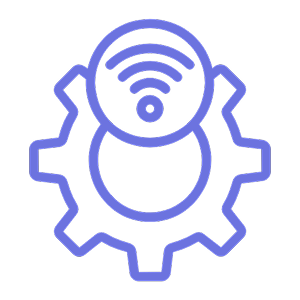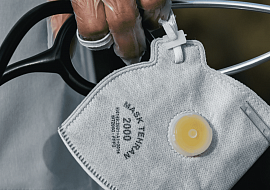Every PSA system begins with data flow modeling and real-world latency analysis. We design architectures — whether it's a 3-layer model or middleware-based stack — to ensure modularity, low latency, and future scalability.
Building Robust IoT Systems in 2025: Challenges, Best Practices & PSA’s Approach
The Challenge of Building Robust IoT Systems in 2025
In 2025, IoT solutions development is no longer limited to experimental pilots or novelty use cases—they are critical infrastructures behind autonomous vehicles, precision healthcare iot software, smart factories, and more. These systems demand real-time, deterministic performance, high reliability, and scalability. But designing such complex systems introduces a range of new challenges:
System Complexity
Modern IoT environments involve distributed devices, vast data streams, and the need for uninterrupted operation in unpredictable environments.
Latency Sensitivity
Real-time responsiveness is mission-critical for applications like autonomous driving, remote surgery, or industrial robotics. Even millisecond-level delays can result in system failure.
Security and Scalability
As IoT systems grow, they become more vulnerable. Ensuring secure communication, firmware updates, and user authentication becomes increasingly difficult.
Resource Constraints
Engineers often work with low-power devices, limited compute resources, and no physical access to the deployed hardware (remote IoT deployment using virtual simulation environments), especially in global or remote installations.
To meet these demands, the next generation of EIoT solutions development projects must be modular, decentralized, scalable, and real-time ready.
Best Industry Practices
Leading IoT developers have coalesced around a set of key strategies and design principles to overcome 2025’s challenges:
1. Separate Data Channels for Automation and Analytics
Automation systems (like IoT factory automation) demand rapid, deterministic action. Sending all data through a single path introduces delay. By separating automation-critical data from bulk analytical data, organizations can reduce congestion, lower latency, and maintain system responsiveness.
2. Adopt RTOS Designed for IoT
RTOS platforms like Azure RTOS ThreadX and FreeRTOS are engineered for real-time control with low overhead. These platforms offer:
-
Deterministic multithreading
-
Energy efficiency
-
Reliable task scheduling
-
Seamless integration with embedded systems
ThreadX, for example, is well-suited for high-function, complex systems, while FreeRTOS offers lightweight operation for distributed sensor networks.
3. Extend Architecture to the Edge
Moving compute power closer to the data source is key. Edge computing, paired with AI inference on the edge, dramatically reduces response times and bandwidth usage. This is crucial for applications such as:
-
IoT predictive maintenance
-
Machine vision quality control
-
Remote asset monitoring
-
Industrial automation/IoT factory automation
4. Decentralize to Scale
A decentralized IoT system offloads real-time decision-making to edge nodes while the Cloud acts as a dashboard for oversight, training AI models, and long-term analytics. This architecture enhances reliability, fault tolerance, and horizontal scalability.
5. Design with Interoperability in Mind
EIoT systems must support standard protocols like MQTT, LoraWAN, or Zigbee. Leveraging open-source platforms reduces vendor lock-in and facilitates easier integration across diverse environments.
6. Build for Sustainability and Resilience
Use low-power components, renewable energy sources, and energy-aware firmware to ensure longevity. Implementing hybrid networks (wired + wireless) and managed switches enhances resilience against outages and network congestion.
How PSA Builds High-Performance IoT Systems
At PSA, we don’t just build connected devices — we build intelligent, scalable, real-time ecosystems. Here's how our approach addresses 2025's toughest challenges:


We use ThreadX and FreeRTOS to create highly specialized, performance-optimized embedded systems. From medical devices to IIoT robots, we match the RTOS to the application’s complexity and power profile.

Our systems push real-time logic and AI inference to the edge, while the Cloud handles model training, monitoring, analytics, and visualization.
This allows real-time actions where milliseconds matter — and robust oversight when they don’t.

Even without physical access, PSA engineers use virtual simulation environments, remote debugging, and hardware emulators to test and iterate faster.

We reconfigure communication stacks from TCP to low-latency protocols (like RS-232 or MQTT-SN) when needed — improving speed, reliability, and efficiency in embedded systems.
Conclusion: Tips for Real-Time EIoT Success in 2025
Designing a scalable, real-time EIoT system isn’t just about putting devices online — it’s about orchestrating fast, intelligent, and secure responses across a decentralized ecosystem. Here's how to succeed:
Separate automation and analytics pipelines
Keep mission-critical data on low-latency paths; route bulk analytics to the cloud to offload compute pressure.
Choose the right RTOS
Use a real-time operating system built for embedded use (e.g., ThreadX) to ensure consistent, deterministic behavior.
Move intelligence to the Edge
Deploy AI models at the edge to minimize latency and optimize bandwidth use.
Decentralize your system
Let the edge handle decisions. Use the Cloud for monitoring, historical data analysis, and visualization dashboards.
Design for scale, security, and sustainability
From secure boot to zero-trust architectures, from low-power design to renewable-powered IoT deployments — resilience must be built in from the ground up.
Foster a data-driven culture
Equip your team with analytics tools, empower experimentation, and collaborate with EIoT experts to stay ahead of innovation curves.
IoT in 2025 is no longer a back-office upgrade — it’s the foundation for real-time automation, intelligent decision-making, and scalable innovation. PSA is ready to help you build that future.
By Irene Tuzikova, Head of EIoT Business Unit at PSA















